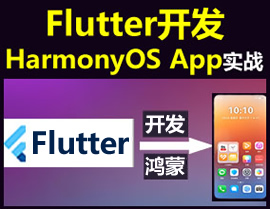1 回复
Go语言中的微服务的特性概述
在Go语言中实现微服务架构,得益于Go语言的简洁性、高性能以及强大的并发处理能力,使得它成为构建微服务架构的热门选择。以下是Go语言中微服务架构的一些关键特性概述,以及简单的示例代码片段来展示这些特性的应用。
1. 高并发与Goroutines
Go语言通过goroutines和channels提供了轻量级的并发模型。Goroutines是Go语言中的并发体,比线程更轻量,成千上万的goroutines可以并发运行在同一台机器上。
示例代码:
package main
import (
"fmt"
"sync"
"time"
)
func worker(id int, wg *sync.WaitGroup) {
defer wg.Done()
fmt.Printf("Worker %d starting\n", id)
time.Sleep(time.Second)
fmt.Printf("Worker %d done\n", id)
}
func main() {
var wg sync.WaitGroup
for i := 1; i <= 5; i++ {
wg.Add(1)
go worker(i, &wg)
}
wg.Wait()
fmt.Println("All workers finished")
}2. 简洁的HTTP服务
Go标准库中的net/http包提供了构建HTTP服务器的强大功能,使得在Go中编写RESTful API变得非常简单。
示例代码:
package main
import (
"fmt"
"net/http"
)
func helloHandler(w http.ResponseWriter, r *http.Request) {
fmt.Fprintf(w, "Hello, %s!", r.URL.Path[1:])
}
func main() {
http.HandleFunc("/", helloHandler)
fmt.Println("Server is listening on http://localhost:8080")
if err := http.ListenAndServe(":8080", nil); err != nil {
panic(err)
}
}3. 强大的标准库与第三方库
Go拥有丰富且强大的标准库,同时也有大量的第三方库支持,如用于JSON处理的encoding/json,用于数据库操作的database/sql,以及用于微服务间通信的grpc-go等。
使用grpc-go的示例(需要安装grpc和protoc编译器):
首先定义.proto文件,然后生成Go代码,这里不展示.proto定义和代码生成步骤,直接展示Go代码使用:
package main
import (
"context"
"log"
"net"
pb "path/to/your/protobuf/package" // 替换为你的protobuf包路径
"google.golang.org/grpc"
)
type server struct{}
func (s *server) SayHello(ctx context.Context, in *pb.HelloRequest) (*pb.HelloReply, error) {
return &pb.HelloReply{Message: "Hello " + in.Name}, nil
}
func main() {
lis, err := net.Listen("tcp", ":50051")
if err != nil {
log.Fatalf("failed to listen: %v", err)
}
s := grpc.NewServer()
pb.RegisterGreeterServer(s, &server{})
if err := s.Serve(lis); err != nil {
log.Fatalf("failed to serve: %v", err)
}
}4. 易于部署与扩展
Go编译成单一的可执行文件,不依赖于外部解释器或运行时环境,这使得Go微服务易于部署和扩展。
5. 跨平台支持
Go语言编写的程序可以编译成适用于多种操作系统的可执行文件,如Linux、Windows和macOS,这大大简化了跨平台部署的复杂性。
综上所述,Go语言以其独特的并发模型、简洁的语法、强大的标准库和第三方库支持,以及易于部署和跨平台等特性,成为构建微服务架构的理想选择。







